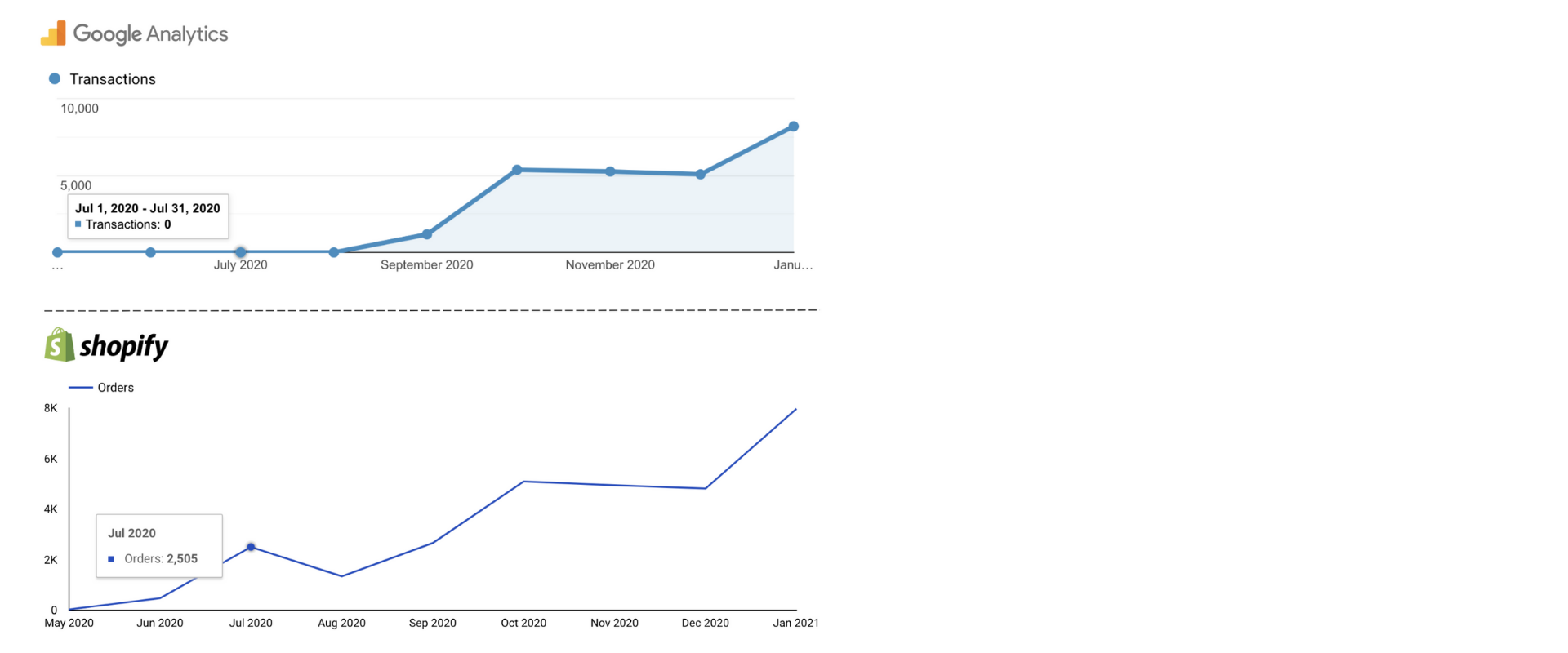Why analytics from Google & Shopify don't match.
Analytics is all about transforming the world around us into cold, hard facts which can inform our decisions. So it can be more than a little confusing when different channels give us different numbers for the same metric. Google analytics and Shopify Analytics both have functions to tell you where customers are coming from and how they are converting…so which one should you trust?
Today's Challenges
Shopify gives you some useful data on who your customers are and what they’ve been buying, but it’s rather lacking when it comes to where those customers have come from.
Nearly every eCommerce business will turn to Google Analytics to fill this gap. GA can give you information on which websites have referred visitors, which ad campaigns are working and it also has sales data built in.
Many clients decide to use GA as their ‘one source of truth’ as it has so many metrics in one place…but they quickly discover that the numbers don’t add up and small inconsistencies quickly cause big problems when the business starts to scale.
Why It Might Be Happening
Historical Data: One of the most common reason why the numbers don’t match is quite simple. If you’ve set up your Google Analytics (or any other tool) a few weeks or months after your store, your historical data will not match, and you should instead rely on Shopify.

Blockers: Customers can use browser extensions to block Google Analytics from tracking their sessions and purchases. A shocking 42.7% of people use ad blocking software across the world and so quite often if there are discrepancies in your data, this might be why. Similarly Google Analytics can only count visitors with JavaScript and cookies enabled. Some visitors might not allow these.
Timezones: Different reporting time zones often cause a headache. At a simple level GA might be reporting using GMT and Shopify UTC, causing a difference in the numbers. Many clients have frustrations when it comes to retention where, for example they might have a 28 subscription cycle but their Shopify reports only come in a standard calendar month.
Metrics: The same metrics are defined in different ways by different tools. For example if you wanted to look at website sessions, some analytics software might include search bots as visitors and give you a higher number, while others won’t. This makes it difficult to achieve one version of the truth and eCommerce teams are guilty of going with the largest number.
What Could You Do Today
When it comes to which data sources to trust 173tech always advise that it’s about choosing which is the most accurate, as opposed to which provider might have the prettiest interface or promise all your metrics in one place.
In this case Shopify is your source for anything relating to your customers and sales and Google Analytics is your source for anything relating to website conversion.
Shopify has all your orders, even those that weren’t made on your website. Orders placed over the phone or recurring orders placed through subscription apps like Recharge all end up in Shopify but not Google Analytics.
While Google Analytics has some useful featured in its Enhanced Ecommerce tracking (like A/B testing) you shouldn’t be using it to analyse sales data.
As with most data, the devil is in the details so if you’re looking to leverage accurate insight about your business…
How 173tech Could Help
Shopify is an amazing tool, but it needs to cater for the needs of millions of eCommerce brands. This means it doesn’t always serve you the right information that is bespoke to your business. If you want to take control of your data and get a more detailed view of your customers, we can help by setting up your own data pipeline, automatic reporting and more.


